The Papers
Reference
About
Note on Photographic Facsimiles, Manuscript Revelation Books
No matter the care put into transcribing a text, a gap still remains
between the reader and the physical document. The use of
photographic facsimiles in this volume narrows that gap but does not
eliminate it. This note explains how these photographs were created
and prepared for publication and identifies some of their
limitations
Creating the Photographs
The textual photographs herein were created specifically for this
publication and its web counterpart by Welden C. Andersen, a lead
photographer for the Audiovisual Department of The Church of Jesus
Christ of Latter-day Saints. Andersen used a Hasselblad H3DII-39
multishot camera equipped with a Hasselblad HC 120mm f4 macro lens.
By taking a sequence of four photographs, each offset by an
increment of one pixel, this camera captures red, green, and blue
data for every pixel, whereas a single-shot camera records only one
color per pixel. The four-shot technology therefore captures much
more detail. The lens is optimized for extremely close focusing,
allowing for images of documents that can resolve to the level of
individual fibers of the paper. Each digital image produced by the
camera comprises approximately 229 megabytes of information. Though
the resolution of these images must be reduced significantly for
print publication, the Joseph Smith Papers Project retains the
original full-resolution files, which will allow textual researchers
to view extremely detailed electronic images. Indeed, a primary
purpose for creating these photographs was to minimize the need for
researchers to consult the original documents.
As illustrated in figure 1, during photography the ledger books were
positioned on a low, leveled table. Studio lights diffused by a
fabric screen were used to illuminate the subject, and a computer
was attached to the camera to process and store the images. To avoid
having to repeatedly reposition the camera and lighting, Andersen
photographed recto pages first, followed by verso pages. Because of
concern for the bindings of the books and in order to lay the pages
as flat as possible, the books were positioned on the table with one
cover flat on the surface and the other cover opened slightly more
than ninety degrees and resting on a prop. The camera was positioned
about four feet above the table on a camera stand (the camera was
temporarily lowered for the photograph in figure 1, in which it can
be seen in the upper right corner). Andersen hand-focused each
photograph from a ladder and then remotely triggered the shutter.
After ensuring the quality of the first image on the computer
monitor, he made a second exposure to create a security backup copy
for each image.
Andersen followed standard professional procedures to achieve the
highest accuracy in color, tone, contrast, and exposure. Before
photographing each book and any time he adjusted lighting, exposure,
or document angle, he calibrated and corrected color using a color
test card and color adjustment software. This eliminated any bias of
the camera sensor and the light source, meaning that the colors
captured in the photographs are as close as possible to the colors
of the documents as they exist today.
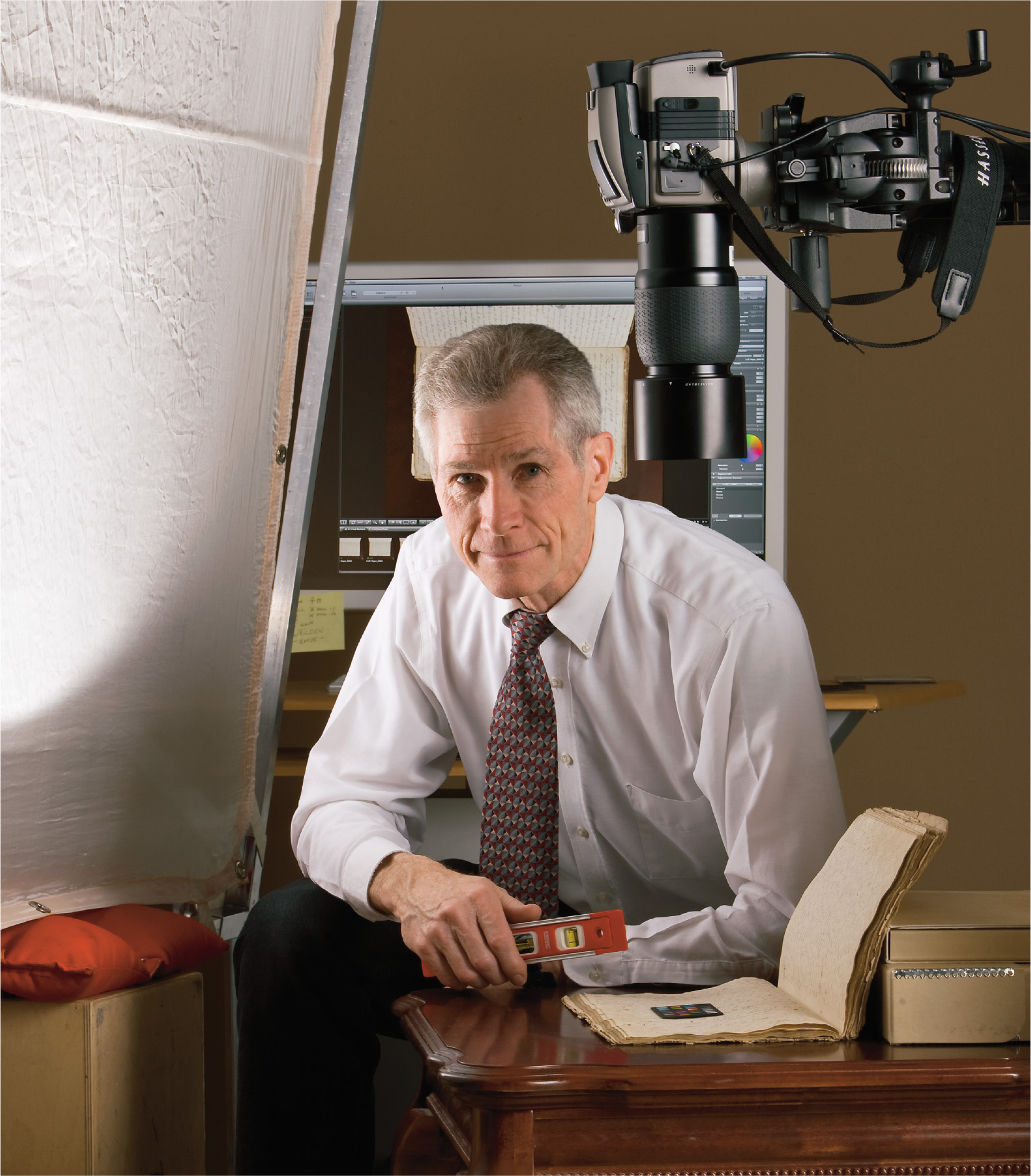
Fig. 1. Welden C. Andersen with the equipment
he used to create the textual photographs in this volume. Revelation
Book 1 is open on the table with a color test card on the page.
Because of tight binding within some of the gatherings in Revelation
Book 1, manuscript pages 73, 91, 93, 95, 181, 183, 185, 187, and
189 would not lie sufficiently flat without assistance.
An archivist used a microspatula to hold down these pages while they
were being photographed (see figure 2). The spatula did not obscure
any text, but in the images presented in this volume it has been
digitally removed and the small area of paper underneath the spatula
has been digitally cloned from the surrounding paper.
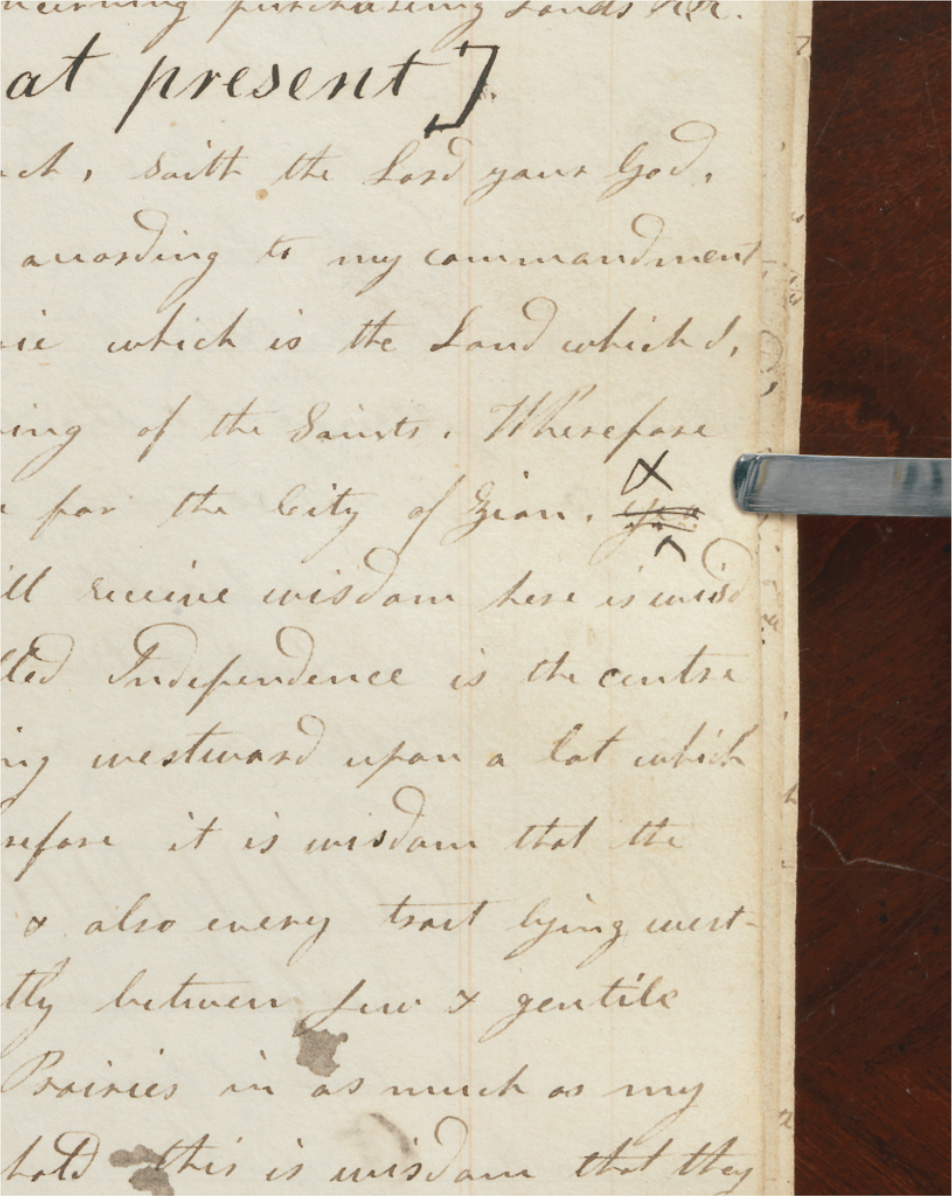
Fig. 2. Manuscript page 93 of
Revelation Book 1 and eight other pages in that volume were held
flat by a microspatula for photography. The spatula was digitally
removed from the images published in this volume.
Preparing the Photographs for Print
Publication
Charles M. Baird, a prepress specialist with the Materials Management
Department of The Church of Jesus Christ of Latter-day Saints,
prepared the images for printing. Following standard prepress
methods, Baird reduced the images to fit the page size in this
volume at a resolution of approximately 300 dpi and converted the
images from the color format stored by the camera (red, green, and
blue) to the colors used in printing (cyan, magenta, yellow, and
black). While converting color, Baird frequently consulted the
original documents to ensure that the color proofs matched the
original documents as closely as possible. The prepress proofs were
later checked against official press proofs from the printer. Any
differences in color between the original documents and the
photographs herein result from the limitations inherent in
printing.
As mentioned earlier in this note, the documents featured in this
volume were photographed resting on a table. For aesthetic reasons,
Baird used photo-editing software to digitally remove the table from
the background and to add a thin shadow at the bottom of the images.
Baird also used photo-editing software in two other cases. The first
case—digitally removing the microspatula from nine images in
Revelation Book 1—was described earlier. The other case relates to
manuscript page 67
of Revelation Book 1. The text on that page is obscured by a slip of
paper affixed to the original page (see figure 3). This slip can be
partially lifted so that most of the underlying page and all of the
text on the back of the slip can be seen and photographed, but the
slip cannot be removed without damaging the adhesive wafer used to
seal the slip to the page (see figure
4). To represent what the underlying
page looks like, Baird created a composite image, digitally
collating a photograph of the text above the slip with another
photograph of the text underneath and below the slip. The composite
image, which contains a triangular whited area to represent the
portion of the page that cannot be uncovered because of the presence
of the wafer, accompanies the transcript of that page in this
volume. As for the slip itself, Baird cropped out the background
from Andersen’s photographs of the front and back of the slip. Those
cropped photographs are shown along with their corresponding
transcripts following manuscript page 67 of Revelation Book 1.
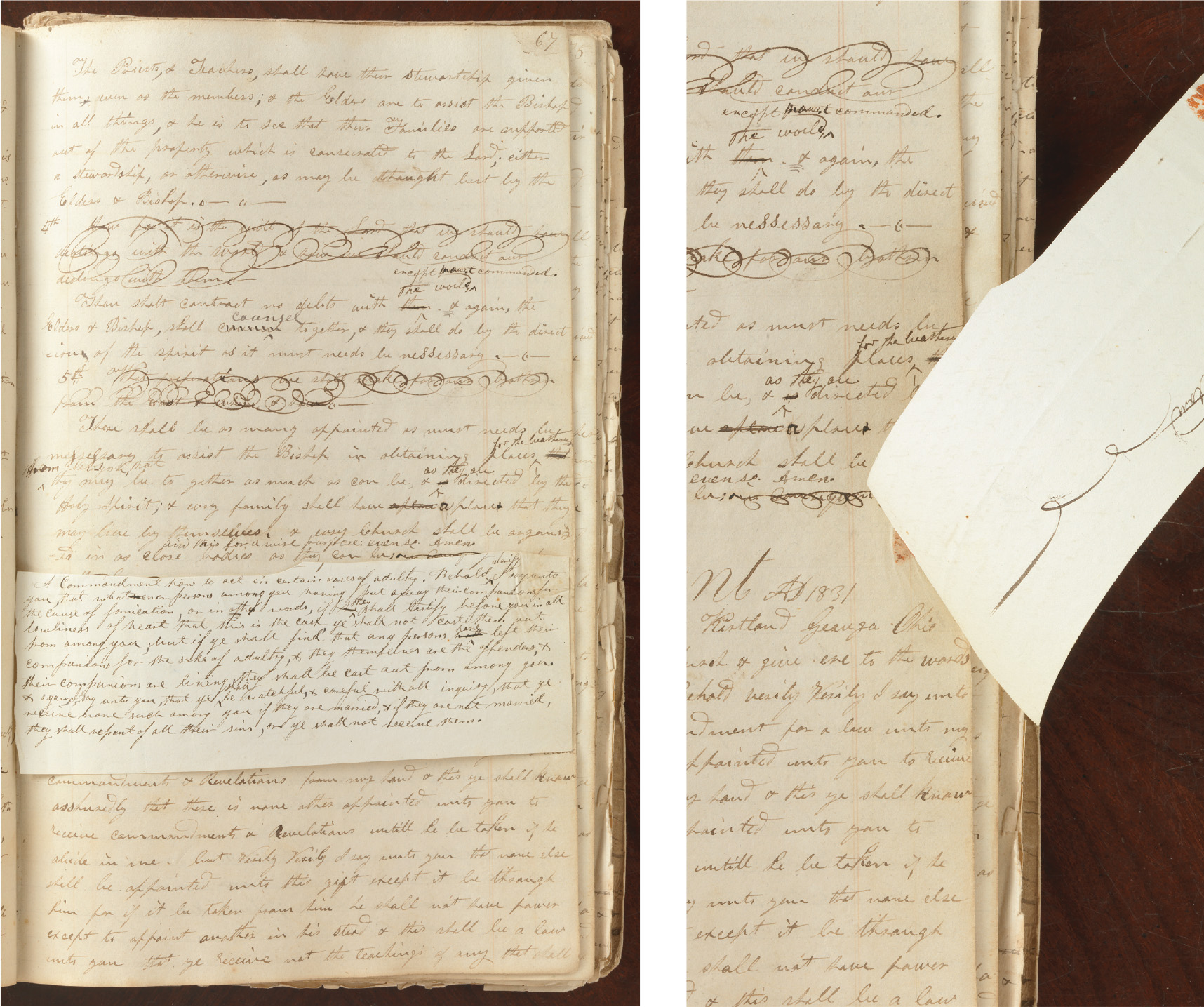
Figs. 3 and 4. A slip of paper
is affixed to manuscript page 67 of Revelation Book 1. The slip was
lifted so that the underlying page and the back of the slip could be
photographed. The photograph accompanying the transcript of
manuscript page 67 herein is a composite.
Except as described in this note, the textual photographs in this
volume have not been altered.
Limitations of the
Photographs
Even careful photographs can underplay important features of the
original document. Two categories of such features are worth noting
here.
First, some details described in the annotation of this volume can be
seen in the original documents and in the electronic images but are
too small to be seen well, if at all, in the photographs printed
herein. For example, some pages of Revelation Book 1 bear uninked
vertical marks that correspond to line breaks in The Evening
and the Morning Star (see figure 5), and various pages
in both books contain pinholes that were created when slips of paper
were pinned to the page (see figure 6).

Figs. 5 and 6. Some features of
the original documents, such as the uninked mark between “the” and
“several” on the top line of manuscript page 58 of Revelation Book 1
(left) and pinholes on manuscript page 69 of Revelation Book 2
(right) are too small to be seen well in the photographs published
herein.
Second, certain physical features obscure text of the original
documents. For example, because of age, some pages have worn along
the outer edges, resulting in curling or inward folding of small
portions of the page (see figure 7). Text may also be obscured by
tight binding and unusual folds in pages. In cases such as these,
the transcripts present more text than the photographs themselves
because the transcribers could uncover text not visible to the
camera’s lens.
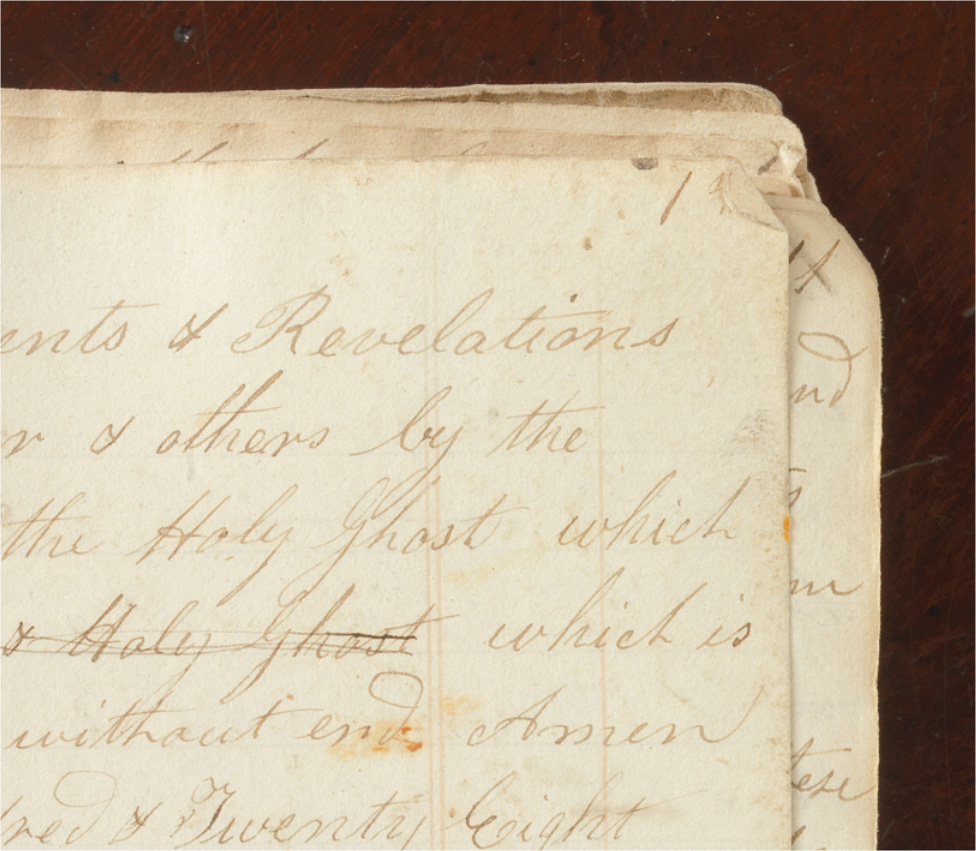
Fig. 7. Wear from aging and use
can cause the edges of paper to curl and fold, obscuring text from
the camera and sometimes from the transcriber. This fold, in the
upper right corner of manuscript page 1 of Revelation Book 1,
partially obscures “st.”.
A few pages of the manuscript books have slips of paper attached to
them that obscure text. The single instance of this that occurs in
Revelation Book 1 was discussed earlier. Revelation Book 2 contains
three slips of paper, one attached to the inside front cover, one
placed between manuscript pages 60 and 61, and one attached to
manuscript page 69. The slip attached to the inside front cover was
lifted by an archivist during photography so that the back of the
slip could be photographed (see figure 8). The text on the front and
back of this slip is transcribed herein, but the brief notation on
the underlying page (visible in figure 8) is not transcribed because
it was likely written before the book was purchased. The slip at
manuscript page 60 is not presently attached to the page itself (see
figure 9). This slip was temporarily removed so its front and
reverse sides and the underlying page could be photographed for this
volume. The slip on manuscript page 69 of Revelation Book 2 was
probably originally attached square with the page itself; later, the
slip was moved and repinned in its present diagonal position (see
figures 10 and 11). For
production of this volume, an archivist temporarily unpinned the
slip so the back of the slip and the underlying page could be
photographed. Then the archivist repinned the slip using the same
pin and pinholes. Photographs of the front and back of all these
slips appear adjacent to their corresponding transcripts in this
volume.
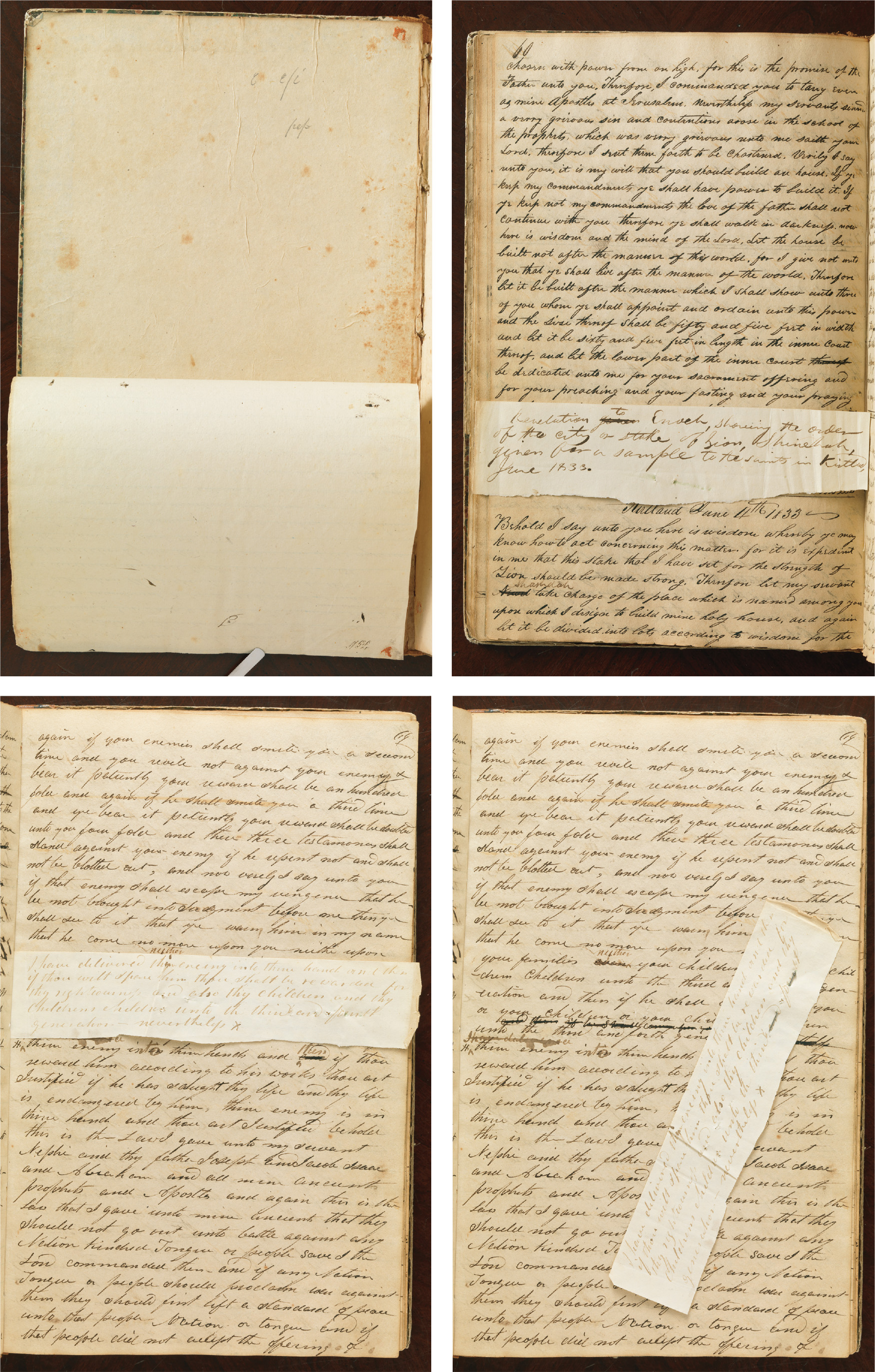
Figs. 8, 9, 10, and 11.
Revelation Book 2 contains three slips of paper that obscure text on
the underlying pages. Top left: A slip of paper affixed to the
inside front cover of the volume was lifted so the verso and the
underlying page could be photographed. Top right: A slip inserted at
manuscript page 60 but not currently attached to the book was
temporarily removed during photography. Bottom left: A slip of paper
was probably originally attached to manuscript page 69 in the
position shown in this photograph. Bottom right: The slip was later
moved and pinned in the position shown. The slip was temporarily
removed during photography and then repinned in the same
location.
Techniques Used to Recover Canceled
Text
Transcribers for this volume used multispectral imaging and
photo-editing software to recover canceled text in two instances in
Revelation Book 1. The first instance is a twentieth-century
notation. On manuscript page 117,
“DC | 108” was written in the upper left corner in graphite and then
erased. This page is in the custody of the Community of Christ, and
that institution’s section number for the revelation thereon is
section 108 (the equivalent in the Latter-day Saint canon is D&C
133).
Multispectral imaging, a technology that uses different wavelengths
of light to extract additional information that cannot be seen by
the human eye, revealed this notation (see figure 12). On manuscript
page31,
two words were heavily stricken. Analysis of both the original
document and of a digital image that was enhanced using
photo-editing software (see figure 13) allowed a partial recovery of
the original inscription.
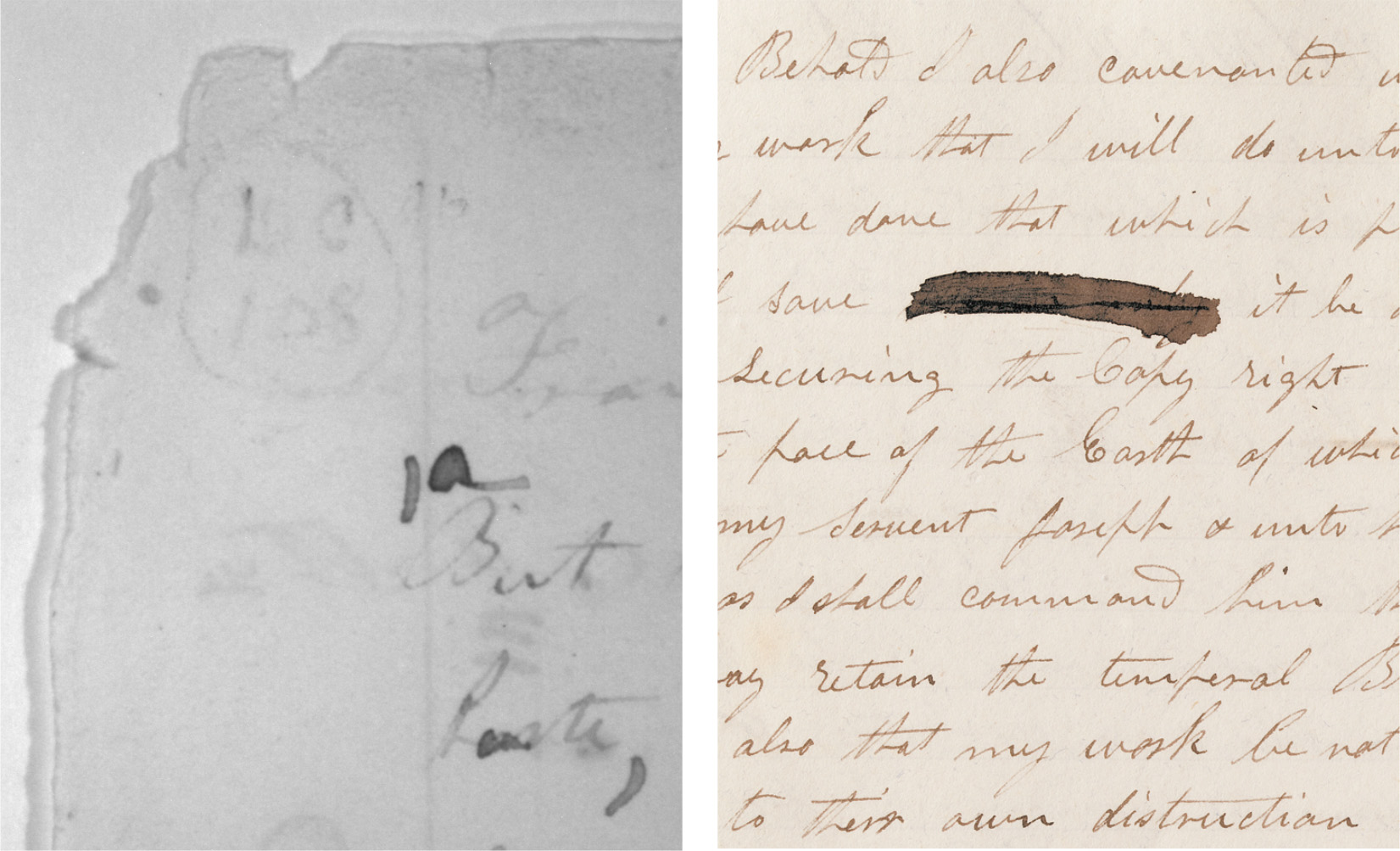
Figs. 12 and 13. Transcribers
used different technologies to recover canceled text. Left:
Multispectral imaging recovered the erased notation “DC | 108” in
the upper left corner of manuscript page 117 of Revelation Book 1.
Right: This enhanced digital image of manuscript page 31 of
Revelation Book 1 was used along with the original document to
partially reconstruct heavily stricken text. The stricken text reads
“M◊◊tin [Martin] only.”